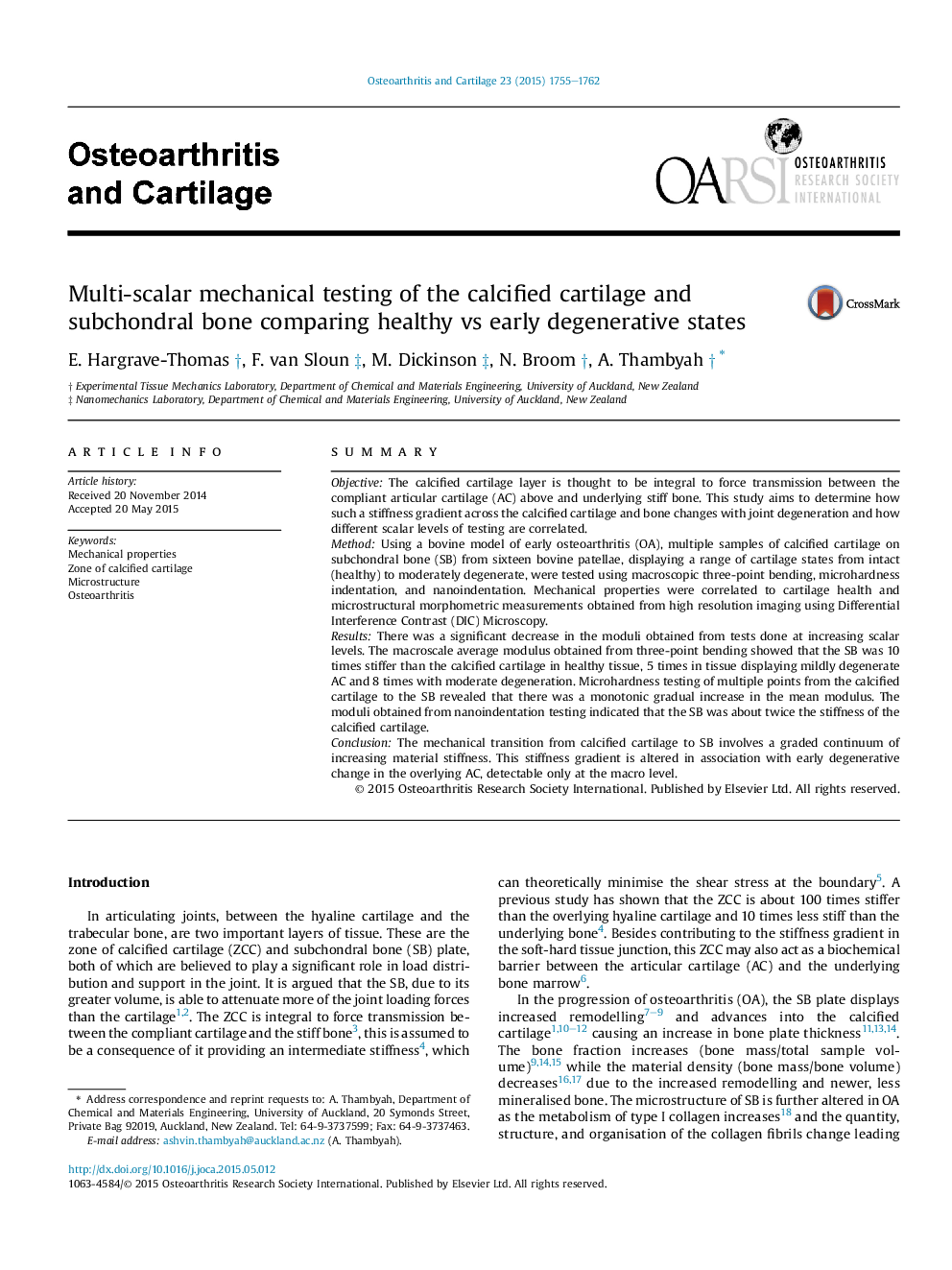| Article ID | Journal | Published Year | Pages | File Type |
|---|---|---|---|---|
| 3379170 | Osteoarthritis and Cartilage | 2015 | 8 Pages |
SummaryObjectiveThe calcified cartilage layer is thought to be integral to force transmission between the compliant articular cartilage (AC) above and underlying stiff bone. This study aims to determine how such a stiffness gradient across the calcified cartilage and bone changes with joint degeneration and how different scalar levels of testing are correlated.MethodUsing a bovine model of early osteoarthritis (OA), multiple samples of calcified cartilage on subchondral bone (SB) from sixteen bovine patellae, displaying a range of cartilage states from intact (healthy) to moderately degenerate, were tested using macroscopic three-point bending, microhardness indentation, and nanoindentation. Mechanical properties were correlated to cartilage health and microstructural morphometric measurements obtained from high resolution imaging using Differential Interference Contrast (DIC) Microscopy.ResultsThere was a significant decrease in the moduli obtained from tests done at increasing scalar levels. The macroscale average modulus obtained from three-point bending showed that the SB was 10 times stiffer than the calcified cartilage in healthy tissue, 5 times in tissue displaying mildly degenerate AC and 8 times with moderate degeneration. Microhardness testing of multiple points from the calcified cartilage to the SB revealed that there was a monotonic gradual increase in the mean modulus. The moduli obtained from nanoindentation testing indicated that the SB was about twice the stiffness of the calcified cartilage.ConclusionThe mechanical transition from calcified cartilage to SB involves a graded continuum of increasing material stiffness. This stiffness gradient is altered in association with early degenerative change in the overlying AC, detectable only at the macro level.
